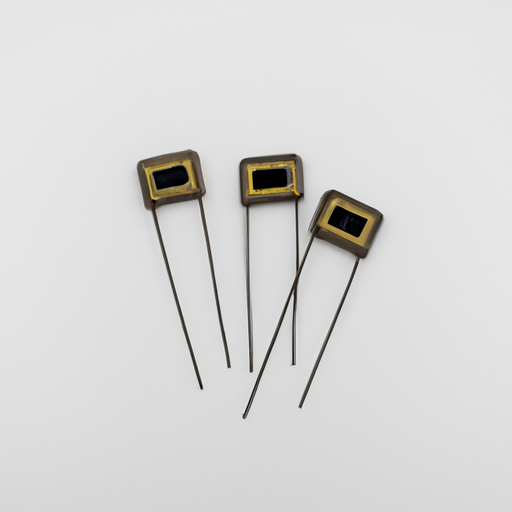Overview of S6008L Resistors and Their Applications
The S6008L resistors are a specific type of resistor that can be utilized in various electronic applications. While detailed articles or case studies specifically on the S6008L may not be readily available, we can explore the core functional technology of resistors in general and highlight effective application development cases that demonstrate their utility.
Core Functional Technology of Resistors

1. Basic Functionality: Resistors are passive components that limit the flow of electric current in a circuit. They are essential for controlling voltage and current levels, ensuring that electronic devices operate within safe parameters.
| 2. Types of Resistors | |
| 3. Material Composition | The performance of resistors is influenced by their material composition. Common materials include: |
4. Power Rating: Each resistor has a power rating that indicates the maximum power it can dissipate without failure. This is crucial for ensuring reliability in various applications.
5. Tolerance: The tolerance of a resistor indicates the allowable variation from its stated resistance value. This is important for precision applications where exact resistance is critical.
6. Temperature Coefficient: This parameter indicates how much the resistance changes with temperature, which is vital for applications requiring stable performance across varying environmental conditions.
Application Development Cases
1. Voltage Divider Circuits: Resistors are often used in voltage divider configurations to create specific voltage levels. For instance, in sensor applications, resistors can scale down voltage levels to match the input requirements of microcontrollers, ensuring accurate readings.
2. Current Limiting in LED Circuits: In LED applications, resistors are essential for limiting the current flowing through the LED. Selecting the appropriate resistor value is critical to prevent damage and achieve the desired brightness.
3. Signal Conditioning: In analog signal processing, resistors are integral to filters and amplifiers. For example, in audio applications, resistors can be part of low-pass or high-pass filters, shaping the frequency response to enhance sound quality.
4. Pull-Up and Pull-Down Resistors: In digital circuits, pull-up and pull-down resistors are used to ensure that inputs to logic gates are at defined logic levels when no active devices are driving the inputs. This prevents floating inputs, which can lead to unpredictable behavior.
5. Temperature Sensing with Thermistors: Thermistors, a type of resistor, are widely used in temperature sensing applications. Their resistance changes with temperature, allowing for precise temperature measurements in HVAC systems, automotive applications, and consumer electronics.
6. Power Management: In power supply circuits, resistors are used for load balancing and creating reference voltages. They are crucial for the stable operation of power management integrated circuits (PMICs), ensuring efficient energy distribution.
Conclusion
Resistors, including specific types like the S6008L, are fundamental components in electronic design and application development. Their ability to control current and voltage makes them indispensable across a wide range of applications, from simple circuits to complex systems. Understanding their core functionalities and applications can lead to more effective designs and innovations in electronics. For more specific information on the S6008L resistors, consulting manufacturer datasheets, technical journals, or industry publications focused on electronic components would be beneficial.
Overview of S6008L Resistors and Their Applications
The S6008L resistors are a specific type of resistor that can be utilized in various electronic applications. While detailed articles or case studies specifically on the S6008L may not be readily available, we can explore the core functional technology of resistors in general and highlight effective application development cases that demonstrate their utility.
Core Functional Technology of Resistors

1. Basic Functionality: Resistors are passive components that limit the flow of electric current in a circuit. They are essential for controlling voltage and current levels, ensuring that electronic devices operate within safe parameters.
| 2. Types of Resistors | |
| 3. Material Composition | The performance of resistors is influenced by their material composition. Common materials include: |
4. Power Rating: Each resistor has a power rating that indicates the maximum power it can dissipate without failure. This is crucial for ensuring reliability in various applications.
5. Tolerance: The tolerance of a resistor indicates the allowable variation from its stated resistance value. This is important for precision applications where exact resistance is critical.
6. Temperature Coefficient: This parameter indicates how much the resistance changes with temperature, which is vital for applications requiring stable performance across varying environmental conditions.
Application Development Cases
1. Voltage Divider Circuits: Resistors are often used in voltage divider configurations to create specific voltage levels. For instance, in sensor applications, resistors can scale down voltage levels to match the input requirements of microcontrollers, ensuring accurate readings.
2. Current Limiting in LED Circuits: In LED applications, resistors are essential for limiting the current flowing through the LED. Selecting the appropriate resistor value is critical to prevent damage and achieve the desired brightness.
3. Signal Conditioning: In analog signal processing, resistors are integral to filters and amplifiers. For example, in audio applications, resistors can be part of low-pass or high-pass filters, shaping the frequency response to enhance sound quality.
4. Pull-Up and Pull-Down Resistors: In digital circuits, pull-up and pull-down resistors are used to ensure that inputs to logic gates are at defined logic levels when no active devices are driving the inputs. This prevents floating inputs, which can lead to unpredictable behavior.
5. Temperature Sensing with Thermistors: Thermistors, a type of resistor, are widely used in temperature sensing applications. Their resistance changes with temperature, allowing for precise temperature measurements in HVAC systems, automotive applications, and consumer electronics.
6. Power Management: In power supply circuits, resistors are used for load balancing and creating reference voltages. They are crucial for the stable operation of power management integrated circuits (PMICs), ensuring efficient energy distribution.
Conclusion
Resistors, including specific types like the S6008L, are fundamental components in electronic design and application development. Their ability to control current and voltage makes them indispensable across a wide range of applications, from simple circuits to complex systems. Understanding their core functionalities and applications can lead to more effective designs and innovations in electronics. For more specific information on the S6008L resistors, consulting manufacturer datasheets, technical journals, or industry publications focused on electronic components would be beneficial.











